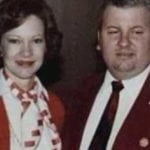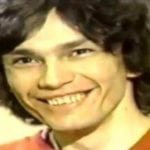It might be impossible to truly understand why serial killers do what they do. Some, though, have tried to explain it, and have given a little insight into what it’s like inside the mind of a killer.
10Jeffrey Dahmer
“The killing was just a means to an end,” Jeffrey Dahmer told a reporter for MSNBC. In his case, killing really was just a small part of his crimes. Over the course of 13 years, he raped, murdered, dismembered and cannibalized men—choosing, in his words, “the best-looking guys” that he could find. “I just wanted to have the person under my complete control,” Dahmer said. “Not having to consider their wishes. Being able to keep them there as long as I wanted.” As a child, Dahmer struggled with a sense of powerlessness. In part, that helpless feeling came from his struggles with his homosexuality. “Around age 14 or 15, I started having obsessive thoughts of violence intermingled with sex, and it just got worse and worse,” he explained. Once he killed his first victim, Dahmer said, “it just seemed like it had control of my life from there on in. After the second time, it seemed like the compulsion to do it was too strong, and I didn’t even try to stop it after that.” Cannibalizing his victims, he said, “made me feel like they were a permanent part of me. . . . It gave me a sexual satisfaction to do that.” “I ended up doing what I did as my way of feeling in complete control. Creating my own little world where I had the final say.”
9Ted Bundy
17 hours before his execution, Ted Bundy sat down with Rev. James Dobson for his final interview. “What’s going through my mind right now,” Ted Bundy told the evangelist, “is to use the minutes and hours that I have left as fruitfully as possible.” He wanted to explain why he’d ended up the way he did. He was not, he explained, the product of a bad childhood. “I grew up in a wonderful home with two dedicated and loving parents.” Instead, he blamed his change on finding softcore pornography at drug stores when he was 12 years old. It led him to seek out harder and harder stuff. “The people would dump the garbage and whatever they’re cleaning out of the house and from time to time,” he said. By sifting through their trash, he and his friends would find “pornographic books of a harder nature.” “It fuels this kind of thought process,” Bundy claimed. “Once you become addicted to it . . . You keep looking for more potent, more explicit, more graphic kinds of materials . . . Until you reach the point where the pornography only goes so far, you reach that jumping-off point where you begin to wonder if . . . if maybe doing it will give you that which is just beyond reading about it and looking at it.” “I’m not blaming pornography,” Bundy said. “I’m not saying it caused me to go out and do certain things.” Instead, pornography simply “helped mold and shape the kinds of violent behavior” that would take over his life.
8Paul Bernardo
“It’s all power and control,” Paul Bernardo told police while trying to appeal his sentence. This was 11 years after he and his wife, Karla Holmoka, were arrested. They had been labeled the “Ken and Barbie Killers” by the media for their wholesome good looks and their twisted murders. As a Christmas gift to her new husband, Karla let Paul rape and murder her own sister. From there, the two went on to do the same to girls across the country. Despite the “Ken” label in the media, Bernardo credits his cruelty to a childhood of insecurity. “I was the type of guy who would freeze at baseball plays,” he told the Court of Appeals. “I don’t want to swing because I know I’m gonna miss. I remember the first time I went waiting at Mother’s Pizza, I was so scared to walk up to the table.” His rapes, he claims, were a way for him to overcome his anxiety about sexual performance. “That’s what I had back then, so I used sex as a vice.” Now, behind bars, Bernardo doesn’t seem to feel that power anymore. He told the police, “I’m the worst piece of crap on the planet.”
7Anatoly Onoprienko
“To me, killing people is like ripping up a duvet,” Anatoly Onoprienko told journalist Mark Franchetti. He had slaughtered 52 people over the course of 7 years. By the time he was imprisoned, he had earned the nickname The Beast of Ukraine. He was completely unrepentant. “Men, women, old people, children, they are all the same,” Onoprienko told Franchetti. “I have never felt sorry for those I killed. No love, no hatred, just blind indifference. I don’t see them as individuals, but just as masses.” “I am being groomed to serve Satan,” he claimed. “I have been taken over by a higher force, something telepathic or cosmic, which drove me. For instance, I wanted to kill my brother’s first wife, because I hated her. I really wanted to kill her, but I couldn’t because I had not received the order. I waited for it all the time, but it did not come.” “If I am ever let out, I will start killing again,” he said. “But this time it will be worse. 10 times worse. The urge is there.”
6Yang Xinhai
No killer in the history of China has ended as many lives as Yang Xinhai. Over a period of just four years, he slaughtered 67 people. He would enter homes, usually those of farmers, and would rape and kill entire families. The news blamed it on a breakup. “His girlfriend broke up with him . . . And as a result, Yang Zhiya developed a vengeful attitude toward society,” one claimed. Others chalked him up as an enemy to society. “He committed crimes to merely hurt society,” one officer told the news. Another paper reported that he “harbored feelings of revenge against society.” Yang Xinhai himself, though, was more stoic in his statement. “I have no desire to be part of society. Society is not my concern,” he said before his execution. “When I killed people I had a desire. This inspired me to kill more. I don’t care whether they de live or not. It is none of my concern.” Yang Xinhai treats his massacre as something unremarkable. “Killing people is very usual,” he said. “Nothing special.”
5Andrei Chikatilo
“When I used my knife it brought psychological relief,” said Russian serial killer Andrei Chikatilo. He had used it many times. He was responsible for the deaths of 53 people, mostly drifters and the mentally handicapped. His killings were brutal. He would gouge out eyes, chew off organs, and stuff bodies with dirt. Chikatilo said that he had dreamed of a better life. “I dreamed of a big political career, and ended up with this nothing life, in stations, and on trains.” When he saw drifters having sex, it reminded him of his own impotence and his failures. “I began to wonder whether these low-class elements have the right to exist.” When he lured his victims into the woods, he would get excited. “I would start to shake. It was like a fever,” Chikatilo said. “I just turned into a beast, into a wild animal.” The killings, he told the court, brought him sexual pleasure and a sense of relief. “I know I have to be destroyed,” Chikatilo said. “I understand. I was a mistake of nature.”
4Charles Cullen
He was called “The Angel of Death.” Over a period of 16 years, Charles Cullen used the trust his job as a nurse had earned him to silently kill. He killed somewhere between 30 and 40 people, slipping them over to the other side with lethal doses of medication. “I thought that people weren’t suffering anymore,” Cullen told a reporter. “In a sense, I thought I was helping.” It’s a strange explanation. Despite the implication, Cullen was no Dr. Kevorkian. His victims were not terminal patients suffering through unnecessary pain. They were generally healthy people, with decades of full and happy lives ahead of them. Confronted with that contradiction, Cullen just said, “My goal here isn’t to justify what I did.” He struggled for words, before getting out, “The only thing I can say is that I felt overwhelmed at the time. It felt like I needed to do something, and I did.” If he hadn’t been caught, Cullen told the reporter, “I don’t know really if I would have stopped.”
3Aileen Wuornos
Aileen Wuornos gets a fair bit more sympathy than even she believes she deserves. Wuornos, who murdered seven men, is perhaps best known as the subject of the movie Monster, in which Charlize Theron portrayed her as a woman plagued by her own hard life and mental illness. Wuornos herself, though, insists that she is not insane. “I’m one who seriously hates human life and would kill again,” she wrote in a letter to the Florida Supreme Court. She pleaded no contest in the court case, offering no defense for herself except to claim that her first victim had violently raped her. She ended her tirade by turning on the Assistant State Attorney and yelling, “I hope your wife and children get raped in the ass!” Before her execution, she went into a mad, rambling rant that was caught on film. “I killed those men, robbed them as cold as ice. And I’d do it again, too,” she said. “There’s no chance in keeping me alive or anything, because I’d kill again. I have hate crawling through my system.”
2Tommy Lynn Sells
“The first time I did a shot of dope, it was the best feeling I ever had in my life,” Tommy Lynn Sells told ABC News. “The first time I killed somebody, it was such a rush. It was just like that, a shot of dope every time I did it, it was that rush again, and I started chasing that high.” He’d been arrested and charged with the murder of a 13-year-old girl, who he’d stabbed 16 times while she slept. She was only one of his victims—he had already killed at least 21 more. Now, awaiting his execution, he was trying to explain why he’d done it. “I don‘t have an on-and-off switch,” he told them. “I’m just after that drug. I’m after that feeling.” That drug, for Sells, was murder. “I like to watch the eyes fade, the pupil fade,” he said. “It’s just like setting their soul free.”
1 David Berkowitz
The Son of Sam, David Berkowitz, terrorized New York with a string of murders across a summer in 1977. Famously, he claimed that his dog had told him to kill. 25 years later, though, when he spoke with Larry King, he distanced himself from the dog story. “It goes back, really, to childhood and the struggles I had as a child, many psychological problems growing up,” Berkowitz said. “I had very bad bouts of depression when I was a child. I was very suicidal.” In his adult years, Berkowitz entered a period of extreme loneliness. “At this time, I had made a pact with the devil, I had allowed this satanic thing to control me, and I felt these paranormal powers,” he said. “I felt somehow invincible. I felt that I had this power and I was, unknown to me, I was slowly being led down a path of—of destruction.” The feeling of invincibility wasn’t a positive one. “I just felt like a brain-washed robot,” he explained. “I just felt something else was controlling me . . . I thought that [killing] was what I was supposed to do.” “I don’t dwell on it at all. It was a horrible thing,” Berkowitz told Larry King. “It was a horrible thing.” Read More: Wordpress
























